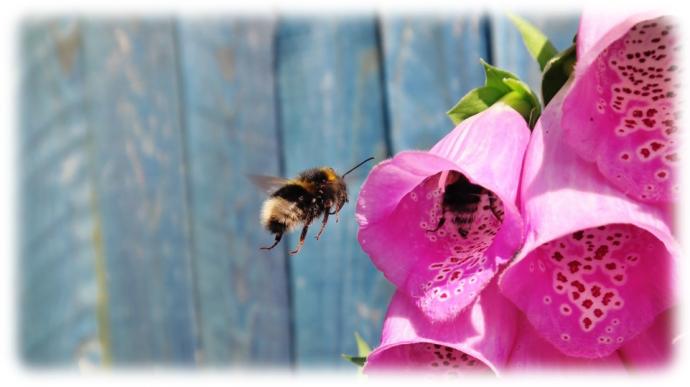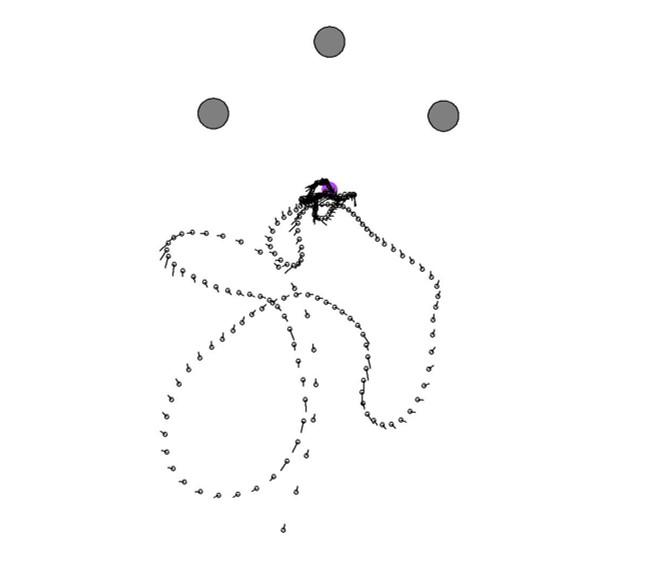
What is a learning flight?
Bumblebees, like other Hymenopterans, are central place foragers. This means that they forage in the surrounding area for nectar and pollen to bring back to a centrally located nest. In order to return to important locations -- such as the nest or a rich flower patch -- over long distances (Bombus terrestris has been recorded foraging almost two kilometres from the nest), they must be able to navigate.
Insects can navigate on different scales using different means in combination -- the patterns of polarized light in the sky, heading toward a prominent landmark in the distance, etc. But once they have arrived in the vicinity of their goal (the nest or flower patch), they have to locate it precisely. To do this they look for local features to use as landmarks to pinpoint the goal.
But to do that, they first would have had to learn where the goal was situated relative to these local features!
Thus, when a bumblebee is still unfamiliar with an important location -- i.e. the first few times leaving the nest or a newly discovered flower patch -- she performs a learning flight to familiarize herself. As she is flying away, she turns around and surveys the immediate surroundings of the nest or flower patch, learning precisely where she can find it later.

What happens during a learning flight?
As the bumblebee is surveying the scene, she briefly fixates objects on the frontal part of the retina where she has better visual acuity. It is thought that these are the moments when she takes visual 'snapshots' of the goal and landmarks. On return, when she finds herself in the vicinity of the goal, she will recall those snapshots and compare them to her current view, and adjust her position until they match, or so the model goes.
Hymenopterans differ in the structure of their learning flights. Bumblebees' learning flights are characterized by successive loops of increasing size, during which she fixates the flower. However, recent research suggests her learning flight occurs in roughly two phases: an initial phase immediately after takeoff and lasting for roughly one third of the learning flight, where she remains close to the goal and focuses on its surroundings; and a late phase, consisting of the loop motifs.

What did I investigate?
A recent study on bumblebees' learning flights, comparing those performed at the nest and those performed at a flower, found a peculiarity in where the bumblebees seemed to focus their attention. Bumblebee workers leaving the nest fixated the surrounding features more thoroughly compared to those leaving a flower.
Because bumblebees leaving the nest for the first time are completely naïve to its surroundings -- as they were born inside -- while those leaving a flower have seen its surroundings while approaching it, this peculiarity suggested that bumblebees leaving a flower might survey the scene less thoroughly because they have already learned on approach to the flower.
In this study, I investigated whether or not what bumblebees see while approaching a flower influences where they look during their subsequent learning flight. The question I asked was: would bumblebees that experienced local landmarks in different positions on approach to a flower focus their attention in different directions during their learning flights?
Responsible for this page:
Director of undergraduate studies Biology
Last updated:
06/08/19

